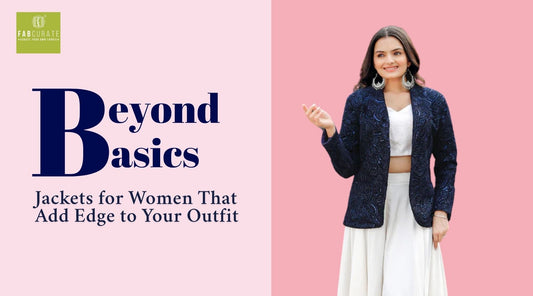One of the biggest industries in the world is fashion. And the transition from a real to a virtual store was a remarkable one. People's perspectives have shifted. The scope of internet lifestyle fashion has expanded in the present. Online shopping has a plethora of benefits, including time and effort savings, the convenience of doing your shopping from home or any other location that suits you, the availability of a wide range of goods, increased discounts from suppliers as a result of fierce competition, and the ease with which you can compare different models and brands.

The newest trends in the fashion and clothing industries are greatly influenced by social media. One is readily influenced by visual cues, and frequent exposure to the virtual world provides our minds with a steady stream of fresh knowledge about the fashion trends and styles used by influencers and celebrities. This has significantly contributed to the growth of online fashion purchasing. You have access to the whole lifestyle market, so you can just unwind at home while looking for the ideal clothing. Choose your size, and color, and provide the other necessary information, and you will instantly receive that thing.

Every company is always working to promote its goods and boost sales. The main element of internet buying is advertising. You are exposed to advertisements whether you are playing a game, viewing a YouTube video, or browsing social media. Facebook and Google utilize your personal information to analyze your interests and serve you with relevant adverts.
Since it first began in India in 2007, online shopping has seen several changes. The virtual world has altered and improved as a result of digitalization and artificial intelligence, simplifying the procedure overall. Using the front camera on your smartphone, you can virtually check the size and how any clothing appears on you. The consumer's position has changed from one of empowered domination to one of passive observation. They are no longer satisfied with only purchasing items of clothing since the exponential development in the usage of digital technology has given them more power. They desire interaction, belongingness, influence, and to be the brands they patronize. They are knowledgeable, picky, and in control; they worry about how they seem in public and on social media as well as how their purchases and possessions are perceived. The great majority of customers utilize digital channels to make purchases, whether they do so first, later, or both.

Because there are no physical storefront restrictions, websites can display a huge range of goods. It aids analytical purchasers in purchasing conducting thorough research. Consumers used to wear anything designers produced. These days, fashion businesses employ data to comprehend consumer tastes, keep tabs on their purchasing habits, and develop goods that satisfy those wants. Since it has always been an art, fashion forecasting is now more of a science thanks to the development of data analytics. The information includes algorithms.
Customers are increasingly seeking out companies that stand up for the environment, according to nearly 50% of fast fashion retailers. According to research, 88% of customers want companies to support their efforts to live more sustainably. Keeping fashion simple also helps the environment and saves money. Simplified collections lessen waste and the amount of clothing created as opposed to passing through garments so rapidly and needing to create a new collection, marketing campaign, and fashion show every six weeks.
Image Source- Pinterest.
















